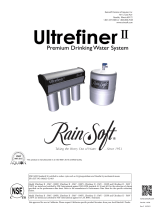| 19
Important Note:
Wet cellulose nitrate filters before placing them in wet
filter holders. If the filter holder is dry, cellulose nitrate
filter must also be dry. Always make it a point to wet
cellulose acetate filters and nylon filters (Sartolon)
before placing them in a filter holder.
6.2 Use a short length of vacuum tubing to attach
a Vacusart (17804-M) to the nipple of the suction
bottle (see Fig.12).
6.3 Close the glass funnel with either the silicone
lid and a piece of cotton or with aluminum foil
(see Fig.13).
6.4 Autoclave the filter holder at 121°C and 1 bar
(14.5 psi) for 30 minutes. (This may be done with all
Sartorius Stedim Biotech membrane filters except for
gelatin and polyamide filters.)
Cellulose nitrate membrane filters (111..) and PTFE
membrane filters (118..) as well as glass fiber filters
(134..) may be sterilized by dry heat for either 2 hours
at 180°C or for 3 hours at 160°C.
(Do not wet the filters before placing them
in filter holders.)
6.5 After sterilizing the assembled filtration unit, proceed
with the filtration run as with clarifying filtration.
Be sure to maintain sterile conditions.
7. Microbiological Testing
For microbiological testing, it is necessary to sterilize
the filter holder containing the membrane filter.
Either autoclave the filter at 121°C for 30 min., or use
dry heat at 180°C for 2 hours. After sterilizing, perform
the filtration run, then remove the membrane filter and
incubate it on the required culture medium|media.
8. Analytical Methods
Sartorius Stedim Biotech Vacuum Filter Holders made
of glass are especially suited for analysis, e.g.,
gravimetric determinations, particulate analysis, etc.




















